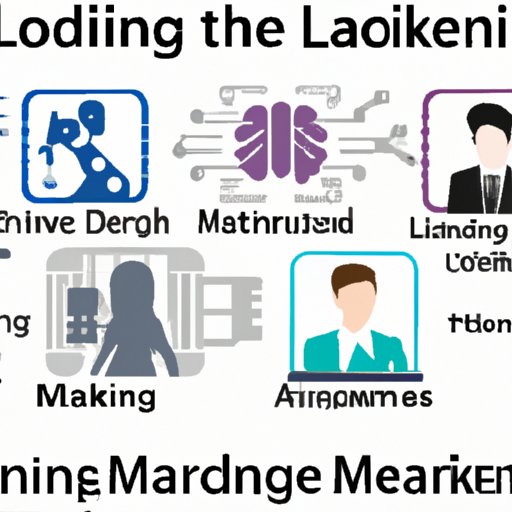
Introduction to Machine Learning in Computer Science
Machine learning is a rapidly growing field of computer science that uses algorithms to process data and make predictions or decisions without explicit programming. It has become an essential part of many areas of research and development, from healthcare to finance to artificial intelligence (AI).

A. Definition of Machine Learning
In simple terms, machine learning is the process of teaching computers to “learn” by giving them data and allowing them to analyze it. By using algorithms, machines can learn from the data and find patterns that can be used to make predictions or decisions.

B. Overview of Applications and Uses
Machine learning has a wide range of applications and uses. It can be used for predictive analytics, fraud detection, natural language processing, computer vision, and much more. It is also used in robotics, self-driving cars, virtual personal assistants, and other emerging technologies.
Basics of Machine Learning and Its Applications
A. Types of Machine Learning Algorithms
The most common types of machine learning algorithms are supervised learning, unsupervised learning, and reinforcement learning. Supervised learning algorithms use labeled data sets to make predictions. Unsupervised learning algorithms use unlabeled data sets to find patterns and clusters. Reinforcement learning algorithms use trial and error to learn from their mistakes and maximize rewards.
B. Challenges and Opportunities of Machine Learning
As with any technology, there are both challenges and opportunities associated with machine learning. One challenge is the need for large amounts of data to train the algorithms. Another challenge is the risk of bias in the data set, which can lead to inaccurate results. On the other hand, the opportunities provided by machine learning are immense. It can be used to automate processes and make predictions that would otherwise be too costly or time consuming to do manually.
How Machine Learning Is Used in the Real World
A. Examples of Machine Learning in Action
Machine learning is already being used in many industries, including healthcare, retail, finance, and entertainment. In healthcare, machine learning is used to diagnose diseases and predict patient outcomes. In retail, it is used to recommend products and optimize pricing. In finance, it is used to detect fraud and identify trading patterns. In entertainment, it is used to create personalized content recommendations.
B. Benefits of Machine Learning for Businesses
For businesses, the benefits of machine learning are clear. It can help reduce costs, increase efficiency, and provide insights into customer behavior. By automating processes and making predictions, businesses can save time and money while also improving their services and products.

Future Trends and Advances in Machine Learning

A. Predictions for the Future of Machine Learning
Machine learning is expected to continue to grow in popularity and use. As the technology advances, it will become more accessible and easier to use. It is also expected to be applied to a wider range of industries and scenarios, from healthcare and finance to manufacturing and transportation.
B. Ways to Prepare for the Future of Machine Learning
To prepare for the future of machine learning, it is important to stay up to date on the latest developments and trends. This can be done through reading industry blogs, attending conferences, and participating in online communities. It is also important to develop an understanding of the different types of machine learning algorithms and how they work.
Conclusion
of Key Points
This article explored what is machine learning in computer science, including its definition, applications, challenges, and opportunities. We looked at how it is used in the real world and made predictions for its future. Finally, we discussed ways to prepare for the future of machine learning.
B. Final Thoughts on Machine Learning in Computer Science
Machine learning is a rapidly growing field of computer science that has a wide range of applications and uses. As the technology advances, it will become more accessible and easier to use. To prepare for the future, it is important to stay up to date on the latest developments and trends and to understand the different types of machine learning algorithms and how they work.
(Note: Is this article not meeting your expectations? Do you have knowledge or insights to share? Unlock new opportunities and expand your reach by joining our authors team. Click Registration to join us and share your expertise with our readers.)
